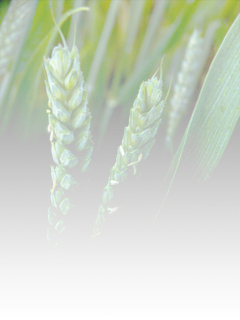Evaluating benefits of intercropping red clover in organic barley production
(Butler) |
||
While fairly common in the upper Midwest, frost-seeding of red clover into small grains is not typically used by organic growers in the Southeast. The primary reason is likely the difficulty in obtaining an adequate stand of clover (either for a cover crop or as a forage crop) in dense stands of winter wheat. This may be less of an issue with barley, due to its earlier maturity. It may also be a system more suited to organic than conventional production, due to the prevalence of N-limitation. Intercropping of red clover into winter small grains has many benefits, including increased nitrogen fixation, reduced niches for weed invasion, and improved soil quality. In rotations where small grains are not followed by soybean, this system also prevents a summer fallow period which must otherwise be cropped by a summer annual until a perennial forage or cool-season cover crop can be planted during the optimum establishment period in the fall. Our objectives are to (1) evaluate impact of organic barley intercropped with two seeding rates of red clover compared to monoculture controls on crop yields (barley and red clover), weed control, and soil properties and (2) evaluate impact of intercropping systems on yield of subsequent rotation crop of grain sorghum. | ||


